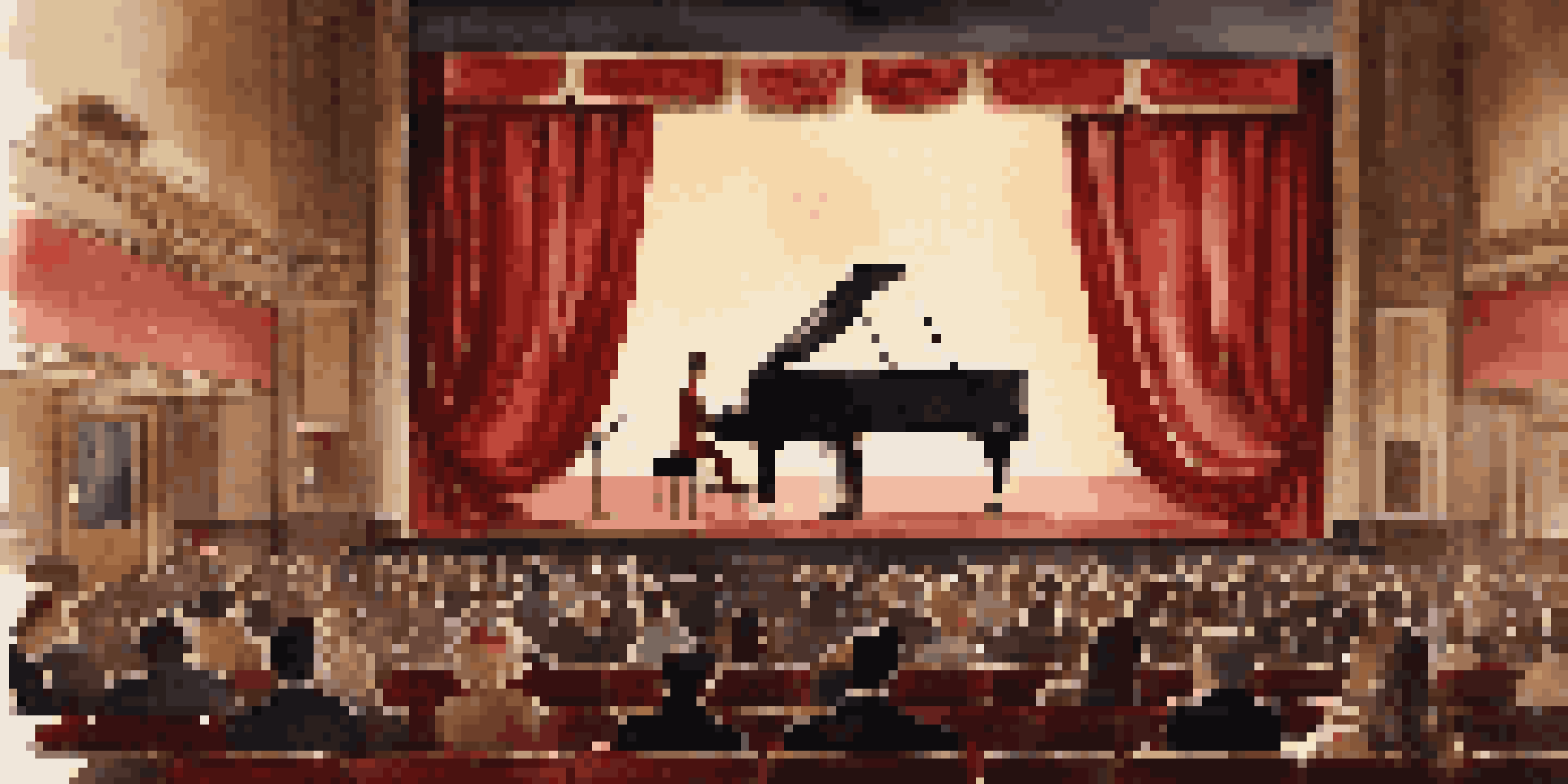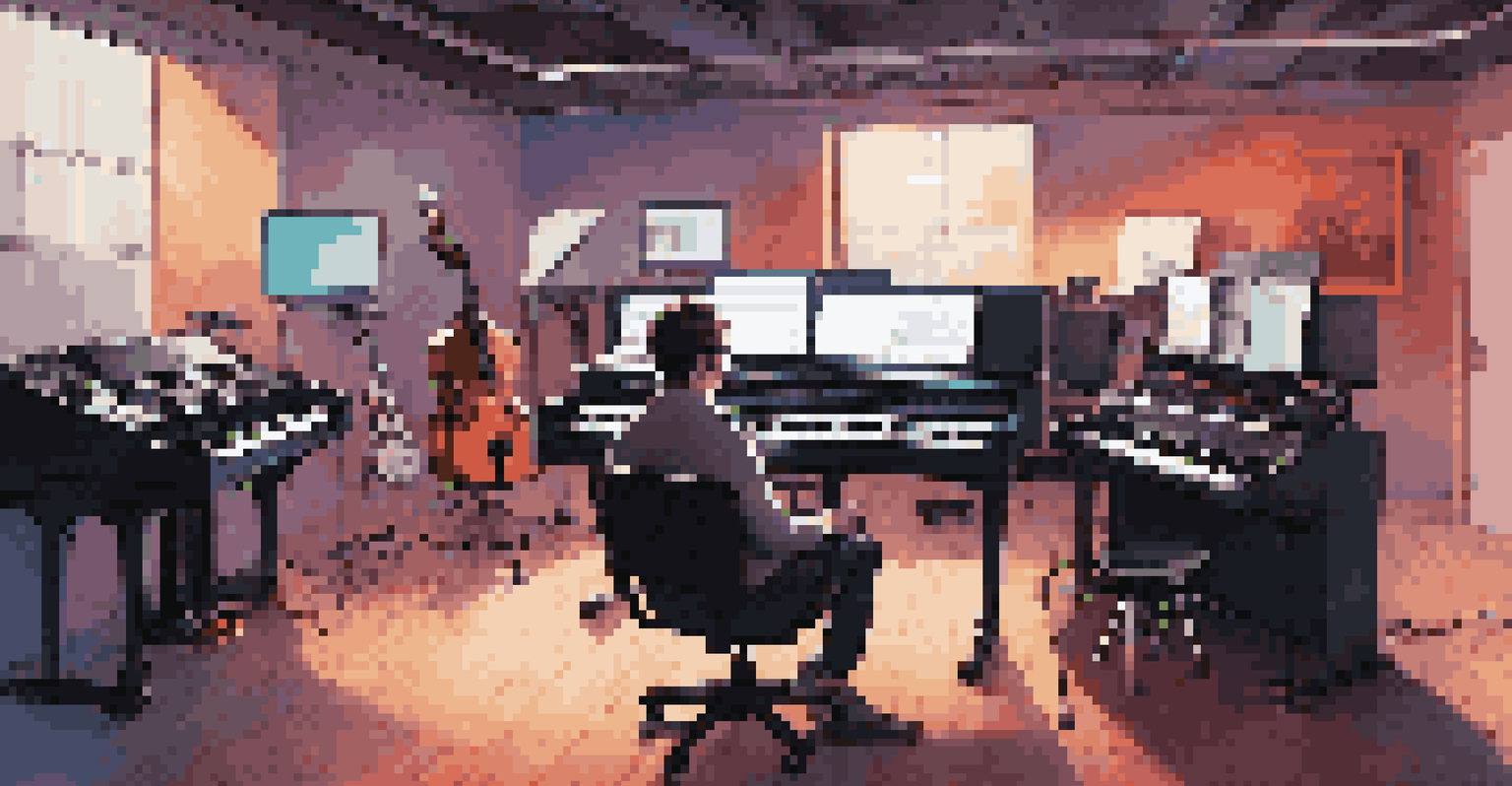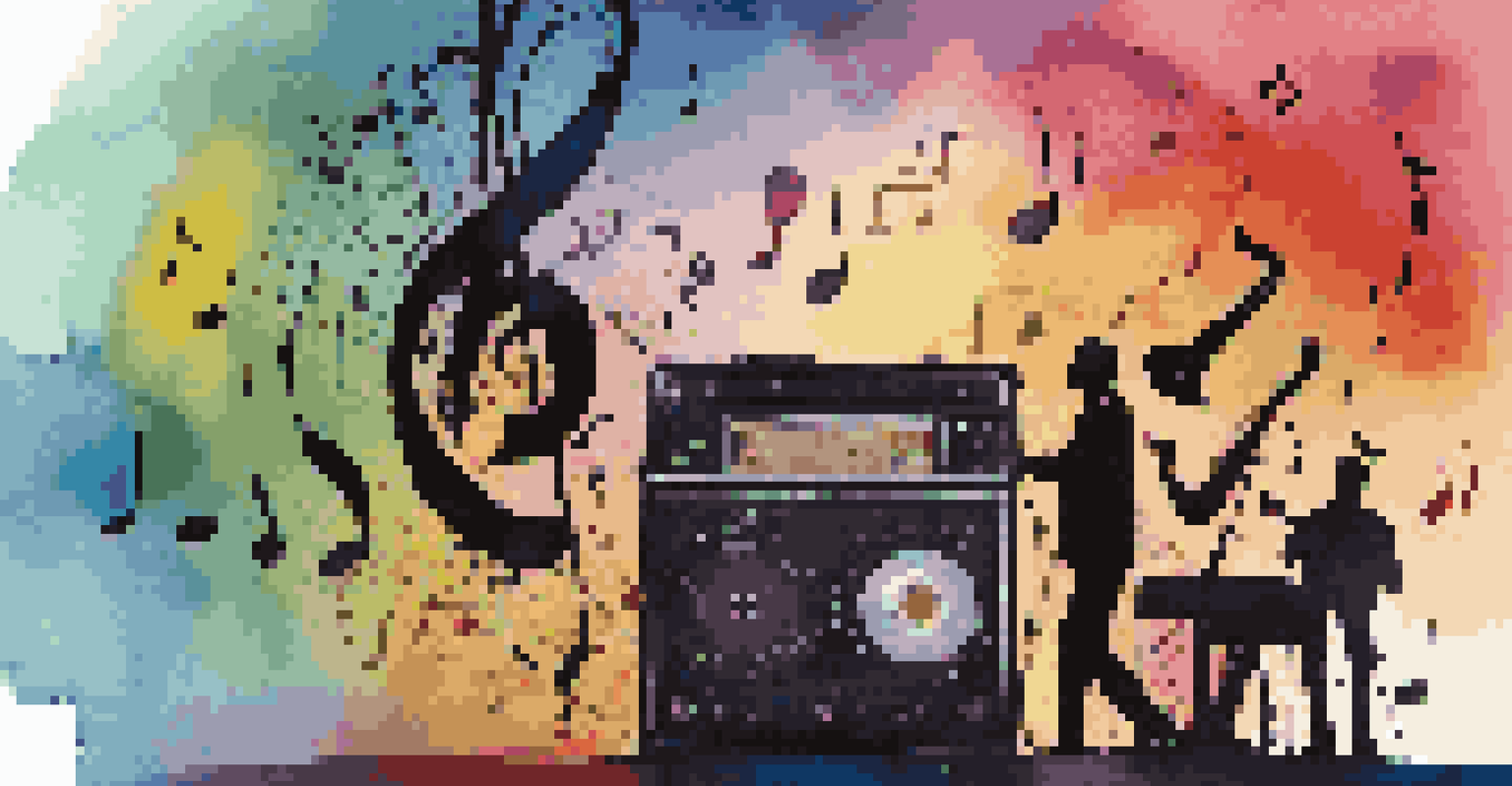The Role of Music in Film: Soundtracks Through the Years

The Beginnings: Silent Films and Live Music
In the early days of cinema, silent films relied heavily on live music to convey emotions and set the tone. Musicians played alongside screenings, enhancing the visual experience with melodies that complemented the on-screen action. This practice created a unique atmosphere, as each performance varied, making every viewing a distinct experience.
Music can change the world because it can change people.
Imagine watching a dramatic scene unfold, only to hear a pianist playing a somber tune that pulls at your heartstrings. This emotional connection laid the groundwork for the integral role of music in film. It was a captivating blend of storytelling and live performance that engaged audiences in ways that visuals alone could not.
As technology evolved, the introduction of recorded sound in films transformed this dynamic. However, the foundation of music's emotional influence was firmly established, leading to the rich soundscapes we enjoy in modern cinema.
The Golden Age: Iconic Scores and Themes
The Golden Age of Hollywood brought about iconic film scores that are still celebrated today. Composers like Max Steiner and Bernard Herrmann crafted unforgettable melodies that not only enhanced the narrative but also became cultural touchstones. Think of the haunting score from 'Psycho' or the sweeping themes of 'Gone with the Wind.'

These musical pieces did more than just accompany films; they helped define characters and evoke powerful emotions. A well-timed musical cue could send chills down your spine or lift your spirits, making the viewer's experience truly immersive. This era showcased the transformative power of music in shaping cinematic storytelling.
The impact of these scores extended beyond the theater, as audiences began to associate specific tunes with their favorite films. This connection created a lasting legacy, leading to the continued appreciation and evolution of film music.
The Rise of Soundtracks: Pop Culture Phenomena
As the film industry evolved, so too did the role of soundtracks, particularly during the 1970s and 1980s. Movies began to feature popular songs that resonated with audiences, transforming soundtracks into chart-topping phenomena. Films like 'Saturday Night Fever' and 'Top Gun' not only showcased original scores but also curated popular music that became synonymous with their storylines.
The music is not in the notes, but in the silence between.
These soundtracks often played a significant role in marketing the films, reaching audiences beyond the cinema. They tapped into the cultural zeitgeist, making the music an integral part of the film's identity. For instance, the iconic song 'Eye of the Tiger' from 'Rocky III' became an anthem for perseverance and determination, perfectly aligning with the film's themes.
This trend of blending popular music with film continues to thrive today, creating a symbiotic relationship that benefits both the film and the artists involved. The result is a rich auditory experience that resonates with viewers long after the credits roll.
The Evolution of Film Scores: Technology and Innovation
With the advent of digital technology, film scoring has undergone a remarkable transformation. Composers now have access to an array of tools and software that allow them to create intricate soundscapes with ease. This innovation has expanded the possibilities for musical storytelling, enabling the blending of traditional orchestral sounds with electronic elements.
Consider the work of Hans Zimmer, whose scores for films like 'Inception' and 'Interstellar' incorporate both orchestral and electronic music. These compositions elevate the cinematic experience, drawing viewers into the story with their complexity and emotional depth. The ability to fuse different genres and styles has redefined what a film score can be.
Additionally, technology has made it easier for independent filmmakers to access high-quality music production. This democratization of sound allows for diverse voices and styles to emerge, enriching the film music landscape and offering fresh perspectives on storytelling.
Cultural Reflections: Music as a Storytelling Tool
Music in film serves not only as a backdrop but also as a powerful storytelling device that reflects cultural narratives. Different genres and styles of music can evoke distinct emotions and convey specific themes, allowing filmmakers to tap into the collective consciousness of their audience. For instance, the use of folk music in films like 'O Brother, Where Art Thou?' adds authenticity and a sense of place.
Furthermore, soundtracks often mirror societal changes and trends, capturing the spirit of the times. The rise of hip-hop in the 1990s led to its incorporation in films like 'Boyz n the Hood,' enhancing the film's realism and cultural relevance. This ability to reflect cultural shifts through music enriches the storytelling experience and fosters a deeper connection with viewers.
As audiences become more diverse, the importance of inclusive soundtracks that represent various cultures and communities cannot be overstated. This evolution in film music continues to shape how stories are told and experienced on screen.
The Emotional Power of Music in Film
One of the most compelling aspects of music in film is its ability to evoke strong emotions. The right score can send shivers down your spine, bring tears to your eyes, or fill you with joy. Think about how the music swells during a climactic moment or how a subtle melody can create an atmosphere of nostalgia.
This emotional manipulation is not accidental; it's a carefully crafted element of filmmaking. Composers like John Williams have mastered this art, using music to enhance the narrative and deepen the audience's emotional engagement. The iconic score of 'Star Wars' is a perfect example, instantly transporting viewers into a galaxy far, far away.
Music acts as a bridge between the film and the audience's feelings, allowing for a shared experience. It's this emotional resonance that makes certain scenes unforgettable, proving that music is not just an addition but an essential part of storytelling in film.
Looking Ahead: The Future of Music in Film
As we look to the future, the role of music in film will undoubtedly continue to evolve. With emerging technologies like virtual reality and artificial intelligence, the possibilities for creating immersive musical experiences are endless. Filmmakers may soon explore interactive soundtracks that adapt to viewers' reactions, blurring the lines between music and narrative.
Moreover, the rise of streaming platforms has transformed how soundtracks are distributed and consumed. Audiences can now access film scores and playlists with ease, fostering a deeper appreciation for the music behind their favorite films. This shift may lead to a greater demand for innovative and diverse musical compositions.

Ultimately, the future of music in film is bright, with endless opportunities for creativity and collaboration. As filmmakers and composers continue to push boundaries, we can expect music to remain a vital and dynamic force in storytelling for years to come.